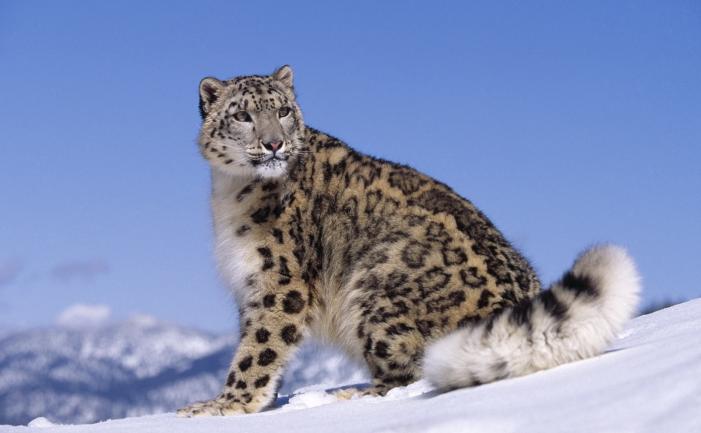High in the Himalayas and far from human eyes, an elusive felid—a snow leopard—prowls her mountain home. She is able to stay hidden thanks to the remarkable adaptations that also allow her to survive in an environment of reduced oxygen, snow, icy winds, jagged rocks and high cliffs, and jagged rocks.
Researchers and conservationists who are not as well-adapted to the rigors of such an environment have struggled for years to monitor snow leopards. They rely more often than not on traditional tracking methods and technological tools—such as camera traps, satellite collars, and genetic studies—to follow the footprints, scat, and scrape marks left behind by these shy wild cats, and to keep tabs on their population.
Recently, the results gathered from such studies were assessed by international experts—scientists from academia, Panthera, Snow Leopard Conservancy, and Wildlife Conservation Society—and were then reviewed and approved by eight international felid and Red List assessments experts, the IUCN Global Mammal Assessment team, and the central Red List Unit, the globally accepted international standard for assessing extinction risk.
The outcome for snow leopards was encouraging, but still highlights the critical importance of conservation efforts. Originally listed as Endangered, a combination of more efficient monitoring techniques, increased conservation actions, reduced rates of decline, and improved protected areas management within the snow leopard range contribute to their current status as Vulnerable.
IUCN downlists the conservation status of Snow leopards from Endangered to Vulnerable.
While the assessors also used same “low” estimate of some 4,000 snow leopards, they concluded that the wild population was not declining as rapidly as it was when last assessed in 2008.
The expert assessor team concluded the population exceeds 2,500 adult snow leopards occupying a vast range of over 700,000 square miles, and that the rate of decline has slowed sufficiently since 2008. to meet the less threatened category of Vulnerable.
In the world of wildlife conservation, news such as this is hopeful and a cause for celebration. Yet, conservationists caution against being overly optimistic. For while the change in status may imply conservation success, the IUCN’s Vulnerable status still indicates snow leopards are prone to extinction and on the decline, though slower than before. Threats such as poaching, habitat destruction, loss of prey species, and climate change still exist and likely increasing.
To combat such threats, it’s critical that conservation efforts must continue and be expanded to include the full support of local governments, law enforcement, and the general public, to ensure that the rare snow leopard receives the protection the species will always need to survive in a world increasingly dominated by humans.



